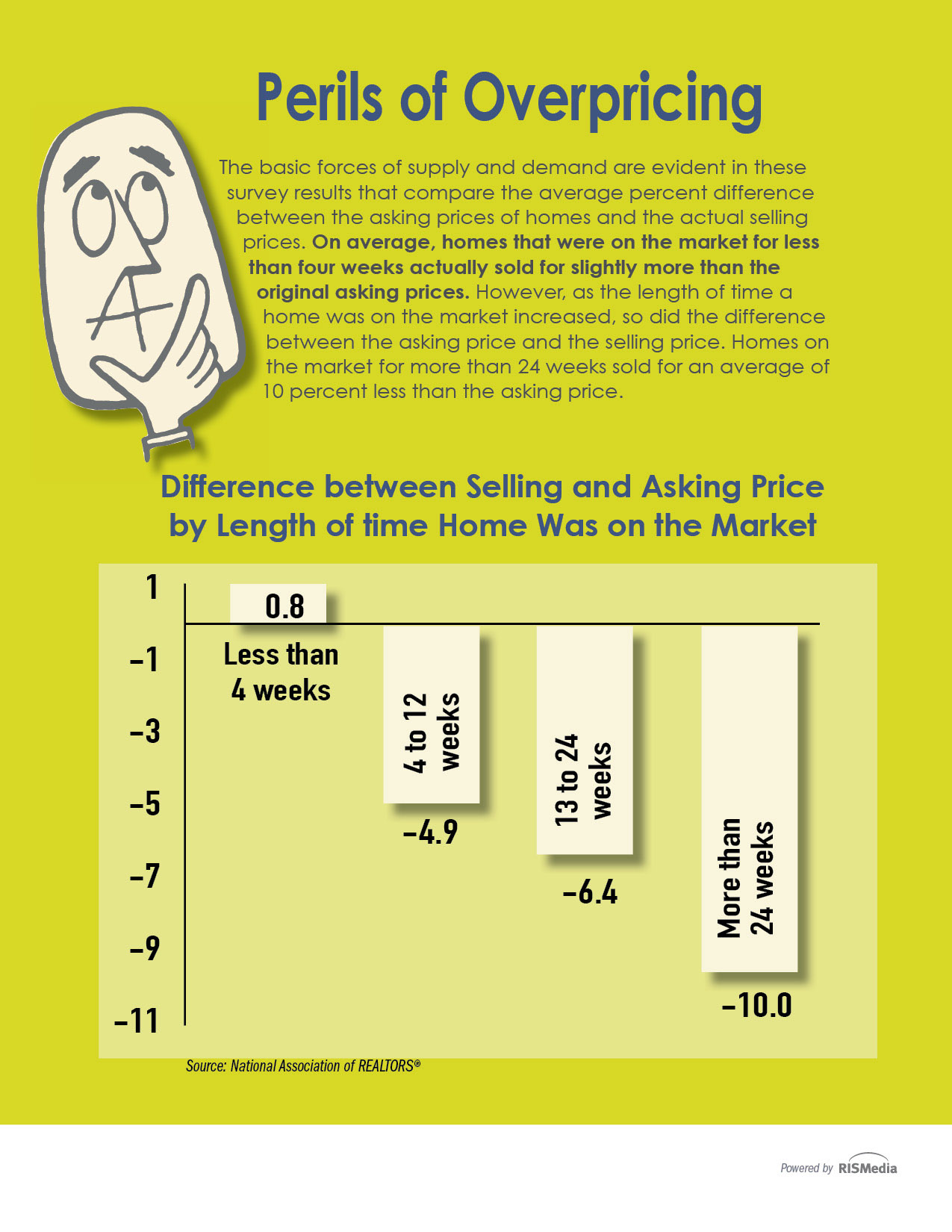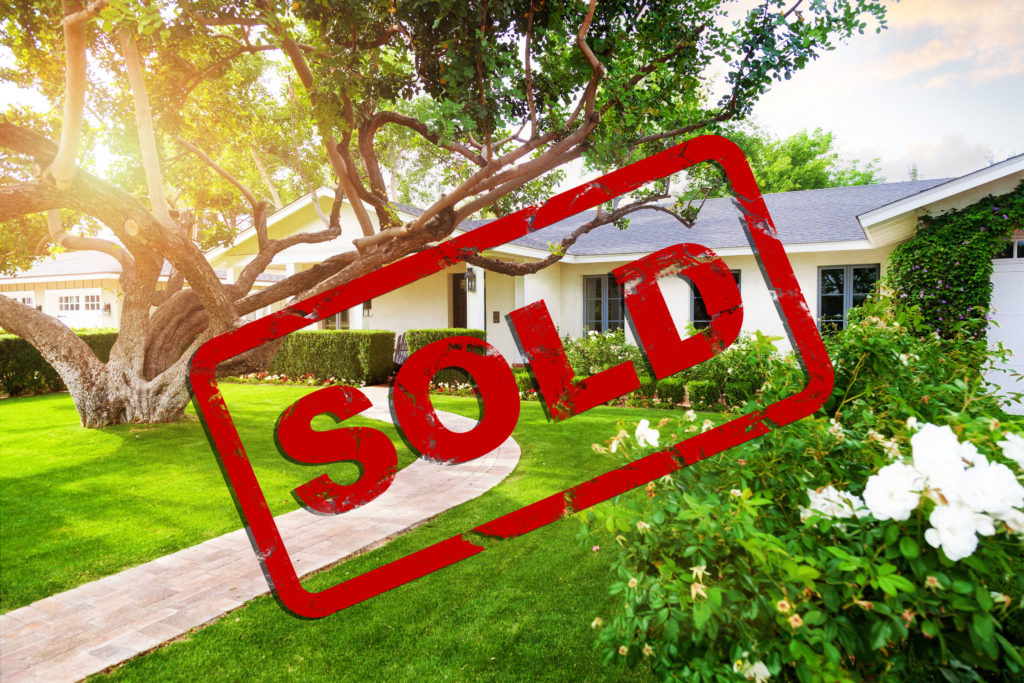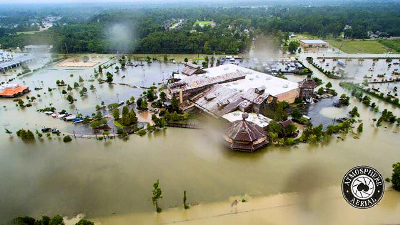Meet Janet Anderson, REALTOR® with RE/MAX Select. Janet is known for her professionalism and dedication and for always putting her client’s needs first. Take a few minutes and get to know Janet beyond real estate!
Author Archives: Janet Anderson
Some of the many celebrations and festivals taking place in Baton Rouge in 2022.
There is something for everyone.

Boost your home’s value by painting the interior and exterior prior to listing
Here’s something you might not know: both interior and exterior painting can add significant value to your home. On average, homeowners who do both see about a $4,000 lift in value with a 55%-107% return-on-investment.
Another benefit is that your home will look fantastic, especially at first glance. In real estate, first impressions matter. Especially in a world dominated by online listings, you may only have seconds to catch the attention of a prospective buyer. New exterior and interior paint is your home putting its best foot forward. That’s why 66% of realtors in a recent survey recommended that the current homeowner repaint the interior and exterior prior to listing.
Interior painting
Painting the interior of the home before listing is a project that most homeowners, no matter how handy, can tackle at a relatively low cost. Even if you use the same colors that your house has now—if you’re unsure what exact shades were used, talk to your local hardware store for paint matching services—a fresh coat of paint will add vibrancy and life back into the home. Again, you want to make a good impression on a prospective buyer. New paint sends a subliminal message: “This house was well-cared for by the current owner.”
Of course, interior painting is also a chance to revisit some of your past color choices and make positive changes. While you shouldn’t go too wild with color, the right accent wall in the right space can really influence the mood of your kitchen, living room, or bedroom. Don’t underestimate the power of color to transform a space from bland to exciting.
Exterior painting
Your home’s exterior paint is especially important to its curb appeal—after all, the front of the house is typically the first thing a prospective buyer sees, whether they are pulling up to the curb or scrolling through homes online. However, to maximize the value you get out of exterior home painting, you’ll need to make the right decisions in a few key areas:
- Quality: Shoddy paint work makes your home look old and cheap—probably not what you’re looking to get out of your exterior painting project! Use high-quality paint that is formulated specifically for your home’s exterior. Take the time to prepare the surface for painting so that the paint adheres and dries correctly. When in doubt, hire an exterior painting contractor.
- Color: If your home is in a homeowner’s association (HOA), chances are that your color palette is already limited to a predetermined selection. However, even if you live in an HOA-free neighborhood, go with what the neighbors are generally doing. You don’t want your home to stick out like a sore thumb!
Paint your home and see the results for yourself
For even more interior and exterior painting tips—including a breakdown of color options—check out this incredible infographic below:.

Save money on your kitchen remodel without compromising value
A new kitchen is not only something you get to enjoy in the present, but it also can boost the long-term value of your home and make it more attractive to prospective buyers. But, just how do you go about completing a kitchen remodel without breaking the bank? In this article, we’ll review a few tips for saving on your kitchen project.
Set a kitchen remodeling budget
The average cost of a kitchen remodel in the United States is about $22,000. That might seem like a lot of money, but there are ways to cut costs and get the project done for less. Here’s just a few:
- Skip major renovations: An open kitchen concept might seem like it has value-boosting potential, but it also could balloon your remodeling costs.
- Handle what you can: While there are some things that require the help of a professional (such as new counter top installation), other projects can be completed by the homeowner, reducing installation costs.
Invest in new counter tops and cabinets
Combined, new counter tops and cabinets will likely be the most expensive part of your kitchen remodel. Many homeowners looking to complete their remodel on a tight budget are tempted to cut corners in this area. We don’t recommend it. They may be expensive, but new counter tops and cabinets are vital to boosting your home’s value. Most prospective home buyers have come to associate “remodeled kitchen” with “new counter tops and cabinets.” If you either pass on replacing your counters or cabinets or invest in low-quality materials, the decision could come back to bite you when you list your home.
Add value through small, inexpensive upgrades
Not every aspect of your kitchen remodel needs to be a “big ticket” item. While new counter tops and cabinets are at the heart of the project, there are many small, DIY projects homeowners can complete to finish the remodel and enhance the value of their new kitchen:
● Lighting: Never underestimate the power of light. The right lighting—whether it’s pendant lighting over a kitchen island or under cabinet lighting showing off your beautiful new quartz counter tops—can bring new life to a space, especially in contrast to the harsh brightness of fluorescent lights.
● Paint: One of the least expensive tasks in a kitchen remodel, finish things off with a fresh coat of paint to make the space feel new and vibrant.
● Accessories: Pick handles and pulls for your cabinets and drawers that match the overall aesthetic of your new kitchen. Choose a back splash that complements your counter tops and cabinets—if you have selected white quartz and white cabinets, a splash of color in the back splash might not be a bad idea.
Get more out of your kitchen remodel
For an exact cost breakdown and more tips for saving money on your kitchen remodel, take a look at this infographic below:

How to Make Your Home More Appealing to Buyers

How to make your home more appealing to buyers
Whether it’s a “buyer’s” or “seller’s” market, homebuyers will always have options when looking for homes in their preferred price range. Even in markets where home inventory is low, buyers can be patient and picky: very few of them are going to settle and pay full asking price for a home that doesn’t check many of their boxes. As a home seller, this means the ball is in your court. Prior to listing, your goal is to make your home the most appealing it can be so that you can get the highest possible offer for your property.
In this article, we’ll review some of the best value-boosting remodeling projects, discuss disqualifying factors you should address before listing, and evaluate the true value of making a good first impression. Let’s dive in:
Get a better ROI out of your remodeling project
There’s no hotter buzzword in home remodeling than “return on investment”, or “ROI.” You can’t watch a home remodeling TV show without hearing it about a dozen times. ROI is especially relevant to homeowners who are planning on selling their home because no one wants to sink thousands into a property months before they walk out the door. You want some degree of assurance that some of that value is going to come back to you when you list your home at a higher price and get better offers from buyers.
Amongst all the upgrades you can make to your home prior to listing, we recommend upgrading your kitchen and bathroom. You’ll see a high degree of ROI from both of these projects.
Eliminate any disqualifying factors
Your home just isn’t going to click for every single buyer out there. After all, there’s no accounting for taste: just because most buyers love your new quartz countertops doesn’t mean that every buyer will.
However, you should consider addressing any aspects of your home that might be universally unappealing for buyers or potential deal-killers. Here’s just a few of them to watch out for:
- Aging HVAC Systems: No buyer wants to purchase a home where they have to worry about the air conditioner or furnace dying in their first year of owning the home. If you have an air conditioner that is starting to have problems, you might have trouble getting traction on your home sale until you replace them.
- Roof Problems: Many states require sellers to disclose any past roof issues or water damage. However, even if yours doesn’t, it will still come up during the home inspection. Nothing kills a sale quite like existing roof problems. Have a professional roofer repair or replace your roof for a clean bill of health.
You only get one chance at a great first impression
For most buyers, the first look they get of your home is online. Home listing sites have dozens, if not hundreds, of available homes for buyers to scroll through. The buyer has already set filters for price and other preferences, so when they click on your listing, they’re probably going straight to the photo slideshow. They may only spend a couple of seconds here: making a good first impression can really make all the difference.
What are buyers looking for?
This is where that kitchen or bathroom upgrade can really be key. Most realtors agree that buyers in the millenial age group—the single largest group of homebuyers today—see upgraded kitchens and bathrooms as a must-have, with a preference for open floor plans that make the kitchen the center of home life.
The connection between curb appeal and maximizing your home’s value
The pictures of your new kitchen or bathroom may be just what it takes to get that prospective buyer to favorite your listing or send it along to their realtor. With dozens of buyers doing this, you’re going to see an uptick in buyers touring your home and—eventually—solid offers coming in for your home. Once you get the offer that’s right, you can move forward knowing that your effort and foresight helped you maximize the value of your home.
Pitfalls When Selling Your Home
Pitfalls? “But I just want to move up/ pare down and I KNOW my home is worth XXXX amount after all the upgrades we have put into it over the years!” Sound familiar?

Every real estate agent has heard this a time or two. Yes, we get it. You have a beautiful home, made fabulous memories and saw a home similar that went for tons of money. But, as real estate agents we are here to guide you to what the current market can bear. And, unfortunately that may be nowhere near what you have in your mind.
But you must also ask yourself, how fast do you want it sold? We ran into a graphic from realtor.com that pretty well explains the need for pricing your home correctly and RISMedia wrote a short post on it as well located at http://rismedia.com/2016/08/09/perils-of-overpricing/). You see, in the first few weeks your home is on the market, you may receive your asking price – even better. But as time goes on, the likely hood of you receiving your asking price dwindles. Take a look at real numbers:

Also remember how you felt when you bought your home many years ago. You loved it, right? But still you wanted to pay a fair price. Did you go see homes that were overpriced? I’ll bet not – and neither will buyers for your home come to see your home if it is not priced right.
But then again, you are a smart seller – otherwise you would not have a realtor to guide you in the current market, the proper price and even a price reduction if we ever need to. We are here to get the best price on your home the market will allow and help you in all the process along the way until your home is sold!

Top Seller Procrastinations
For some, the decision to sell a home is almost automatic, with no hesitation: job change, seller’s market, need more room or need to downsize, etc. For others, there could be a number of reasons why a property owner might hesitate, or procrastinate, to sell. If you’ve thought about selling, but just can’t bring yourself to do it, you could have fallen victim to some of the most common top seller procrastinations listed below.
#1. “I’m waiting for the value of my property to increase.”
Patience is a virtue, but when it comes to real estate, sometimes it’s not the best practice.  Waiting to sell a property might seem like a good idea, especially in real estate markets that are still growing. But in cities where real estate markets have seen lots of competition, waiting to sell a property in order to see a large return may backfire if other nearby areas also see a rise in property values. If you’re procrastinating selling a property because of a hope that the property’s value will increase, it’s best to talk to a real estate agent about the local market to see if now is the time to sell or not.
Waiting to sell a property might seem like a good idea, especially in real estate markets that are still growing. But in cities where real estate markets have seen lots of competition, waiting to sell a property in order to see a large return may backfire if other nearby areas also see a rise in property values. If you’re procrastinating selling a property because of a hope that the property’s value will increase, it’s best to talk to a real estate agent about the local market to see if now is the time to sell or not.
#2. “I’m waiting for my house to be painted/fixed up, so I make top dollar.”
We all want to get top dollar for our property. With the many things you can do to help increase your property’s value, waiting to sell because you’re waiting to make repairs might not be the best plan if you’ve been waiting six years to paint your house. Waiting to sell because your home isn’t as up-to-date as it could be puts a lot of responsibility on you, the homeowner. If you have a busy life, it’s likely those projects will take a long time to get done, so waiting to sell until you have your home updated could be a seller procrastination in disguise, and definitely something to avoid.
#3. “I’m waiting for the last kid to go to college.”
While it may seem like a great idea to stay in one home while your children grow, the reality is real estate markets all over the country go up and down year to year, and if you’re hoping to make a killing on your home once your kids have flown the coop, you might be out of luck. Markets that are popular now might not be in 7 to 17 years. When it comes to real estate, nothing is guaranteed, especially in the not so foreseeable future. By waiting, you’re betting on an increase for real estate in your area, and while that bet might seem like a sure thing right now, the future is unknown.
#4. “I’m playing the long position like my parents.”
For many Americans who have recently retired, the homes they bought 30 to 40 years ago have  seen a very large return on investment. The median home value in the U.S. in 1980 was $47,200. As of 2014 numbers, that value rose to $188,900 (and for those markets that have seen huge gains, the median value may be hundreds of thousands greater). For those just entering the real estate market, buying a home is incredibly expensive and requires a lot more money than it did when our parents bought their first home. Real estate, especially for younger people, should almost act as a financial strategy, where one plays the local real estate market by buying low and selling high in a relatively short amount of time to fully maximize an investment. Staying in a home for only three to five years could be a much more financially sound strategy than hoping a single home’s value increases x amount over the next 40 years. The economy is completely different than it was when Baby Boomers first entered the job market. Don’t procrastinate on selling with the hope that you’ll see a greater return on your property when you retire like many of our parents are seeing.
seen a very large return on investment. The median home value in the U.S. in 1980 was $47,200. As of 2014 numbers, that value rose to $188,900 (and for those markets that have seen huge gains, the median value may be hundreds of thousands greater). For those just entering the real estate market, buying a home is incredibly expensive and requires a lot more money than it did when our parents bought their first home. Real estate, especially for younger people, should almost act as a financial strategy, where one plays the local real estate market by buying low and selling high in a relatively short amount of time to fully maximize an investment. Staying in a home for only three to five years could be a much more financially sound strategy than hoping a single home’s value increases x amount over the next 40 years. The economy is completely different than it was when Baby Boomers first entered the job market. Don’t procrastinate on selling with the hope that you’ll see a greater return on your property when you retire like many of our parents are seeing.
#5. “I’m waiting for my emotional bond to lessen.”
Memories mean a lot to many people. When it comes to a home full of memories, the emotional attachment to the property can make it very hard to sell, even when it may seem like the most common sense thing to do (or when you have to or need to sell). If you’re avoiding a home sale because of an emotional attachment, it’s best to remember that those memories will always be with you, no matter where you live. It’s very unlikely for an emotional bond to lessen, especially in a home full of love – resist the temptation to procrastinate and preserve your memories through photos and videos, which can go with you no matter the next destination.
Memories mean a lot to many people. When it comes to a home full of memories, the emotional attachment to the property can make it very hard to sell, even when it may seem like the most common sense thing to do (or when you have to or need to sell). If you’re avoiding a  home sale because of an emotional attachment, it’s best to remember that those memories will always be with you, no matter where you live. It’s very unlikely for an emotional bond to lessen, especially in a home full of love – resist the temptation to procrastinate and preserve your memories through photos and videos, which can go with you no matter the next destination.
home sale because of an emotional attachment, it’s best to remember that those memories will always be with you, no matter where you live. It’s very unlikely for an emotional bond to lessen, especially in a home full of love – resist the temptation to procrastinate and preserve your memories through photos and videos, which can go with you no matter the next destination.
Selling a home is a big decision. For some the decision is easy, for others it can mean years and years of delay. Don’t fall prey to seller procrastination – contact your local agent to help you work through your delay. S/he will be able to address your concerns and will work directly with you to come up with a solid solution to the issue.
Baton Rouge Community Events
Come see what’s happening in Baton Rouge! We have plenty of great Festivals and Celebrations for everyone to enjoy!

Worst Disaster Since Sandy
The catastrophic flood devastating Louisiana is now the worst natural  disaster to strike the United States since Hurricane Sandy four years ago, the Red Cross said.
disaster to strike the United States since Hurricane Sandy four years ago, the Red Cross said.
“Thousands of people in Louisiana have lost everything they own and need our help now,” said Brad Kieserman, the Red Cross’ vice president of disaster services operations and logistics.
“This disaster is the worst to hit the United States since Superstorm Sandy, and we anticipate it will cost at least $30 million — a number which may grow as we learn more about the scope and magnitude of the devastation.”
6,900,000,000,000 gallons of rain in one week.
The calamity struck quickly and ferociously. In one part of Livingston Parish, more than 31 inches of rain fell in 15 hours.
Hopefully we can be of some help by passing on some more Flood Resources we have found:
- Travelers can find information regarding road closures by visiting www.511la.org or by dialing 511 from their telephone and saying the route or region where they are seeking information. Out-of-state travelers can access the system by calling 1-888-ROAD-511 (1-888-762-3511).
- Office of the Governor disaster declared, http://gov.louisiana.gov/news/major-disaster-declared-for-the-state-of-louisiana-8-14-16, and, additional parishes added, http://gov.louisiana.gov/news/additional-parishes-added-to-federal-disaster-declaration-8-16-16.
- FEMA Disaster Assistance, http://gohsep.la.gov/Portals/0/Documents/1-800_Flier_Eng.pdf, and, Louisiana Flood Resources on FEMA’s home page, http://www.fema.gov/.
- SBA Assistance to Louisiana Businesses and Residents affected by severe storms and flooding, https://www.lsbdc.org/resources/?p=1849.
- Louisiana Business and Technology Center’s Assistance for Businesses document is attached.
- How to Apply for help when you don’t have flood insurance, http://www.theadvocate.com/baton_rouge/news/business/article_afe2af4a-6300-11e6-b158-5f6c38d58837.html?sr_source=lift_amplify.
- FDIC Financial Institution Letter 54-2016, Regulatory Relief Guidance to Help Financial Institutions and to Facilitate Recovery in Areas of Louisiana Affected by Severe Storms and Flooding, https://www.fdic.gov/news/news/financial/2016/fil16054.html.
- OCC guidance, http://www.occ.gov/news-issuances/news-releases/2016/nr-occ-2016-94.html.
- Office of Financial Institutions Emergency Declaration and Emergency Guidance, http://www.ofi.la.gov/, listed under Depository tab.
Many Bankers have asked how they can help. Here are a couple:
- Baton Rouge area charitable organizations, https://www.businessreport.com/article/local-charitable-organizations-offer-variety-ways-help-flood-victims?utm_campaign=dr_pm-2016_Aug_15-15_17&utm_medium=email&utm_source=dr_pm.
- Lafayette area charitable organizations, https://donate.unitedwayofacadiana.org/page/contribute/greater-acadiana-united-ways-disaster-fund.
The devastation of the flood of 2016 to Baton Rouge and surrounding areas has been high.  Many homes have been destroyed and many are homeless. Some help is on the way from FEMA (Federal Emergency Management Agency) but it is hard to wade through who and what is eligible. Hopefully we can shed a bit of light in the darkness.
Many homes have been destroyed and many are homeless. Some help is on the way from FEMA (Federal Emergency Management Agency) but it is hard to wade through who and what is eligible. Hopefully we can shed a bit of light in the darkness.
Determining Eligible Benefits
- This questionnaire helps you determine what benefits you may be eligible for: https://www.disasterassistance .gov/get-assistance/find- assistancehis is the hyperlink to FEMA’s IHP Applicant’s Guide. The first few pages give a nice summary of eligible v. ineligible losses, etc. I’ve also attached it in PDF format. http://www.fema.gov/pdf/assist ance/process/help_after_disast er_english.pdf
- Online Application Process. This link takes you to the online application process.
- https://www.disasterassistance .gov/DAC/govBenefitReceiver. do?gbsessionid=0&action=RI&lan gcode=EN
Information for Online Application:
You’ll need to have the following information handy to apply online:
- Social Security number
- Family’s gross total household income at time of disaster;
- Contact information
- Electronic Funds Transfer (EFT) Direct Deposit Information (could facilitate quick transfer of funds)
- FEMA Evacuee Hotel List: (Note: you’ll need to select Louisiana before hitting submit to search) http://www.femaevachot els.com/index.php
FEMA’s IHP Program Summary
Before you apply for FEMA’s IHP Program online, it may be helpful to know what benefits you are eligible for:
The following are not eligible losses under the IHP:
- IHP will not cover all of your losses from damage to your property (home, personal property, household goods) that resulted from the disaster.

- IHP is not intended to restore your damaged property to its condition before the disaster.
- In some cases, IHP may only provide enough money, up to the program limits, for you to return an item to service. IHP does not cover business‐related losses that resulted from the disaster.
- By law, IHP cannot provide money to you for losses that are covered by your insurance.
- While some money is available through IHP, most disaster aid from the Federal government is in the form of loans from the Small Business Administration (SBA) that must be repaid. Applicants to IHP may be required to seek help from SBA first, before being considered for certain types of IHP help. You do not have to submit an SBA loan application to be considered for FEMA rental assistance
The following types of assistance are available through the IHP:
- Temporary Housing (a place to live for a limited period of time): Money is available to rent a different place to live, or a government provided housing unit when rental properties are not available.
- Repair: Money is available to homeowners to repair damage from the disaster that is not covered by insurance. The goal is to make the damaged home safe, sanitary, and functional.
- Replacement: Money is available to homeowners to replace their home destroyed in the disaster that is not covered by insurance. The goal is to help the homeowner with the cost of replacing their destroyed home.
- Permanent/Semi Permanent Housing Construction: Direct assistance or money for the construction of a home. This type of help occurs only in insular areas or remote locations specified by FEMA, where no other type of housing assistance is possible.
- Other Needs: Money is available for necessary expenses and serious needs caused by the disaster. This includes medical, dental, funeral, personal property, transportation, moving and storage, and other expenses that are authorized by law.
Program Eligibility
To receive money or help for Housing Needs that are the result of a disaster, all of the following must be true:
- You have filed for insurance benefits and the damage to your property is not covered by your insurance. You may be eligible for help from IHP to repair damage to your property.
- You or someone who lives with you is a citizen of the United States, a non‐citizen national, or a qualified alien.
- Your home is in an area that has been declared a disaster area by the President.
- The home in the disaster area is where you usually live the majority of the year.
- You are not able to live in your home now, you cannot get to your home due to the disaster, or your home requires repairs because of damage from the disaster.
To receive money for Needs Other than Housing that are the result of a disaster, all of the following must be true:
- You have losses in an area that has been declared a disaster area by the President.
- You have filed for insurance benefits and the damage to your personal property is not covered by your insurance. You may be eligible for help from IHP to repair damage to your property.
- You or someone who lives with you is a citizen of the United States, a non‐citizen national, or a qualified alien.
- You have necessary expenses or serious needs because of the disaster.
- You have accepted assistance from all other sources for which you are eligible, such as insurance proceeds or SBA loans.
You may not be eligible for money or help from IHP if:
- You have other, adequate rent‐free housing that you can use (for example, rental property that is not occupied).
- Your home that was damaged is your secondary or vacation residence.
- Your expenses resulted only from leaving your home as a precaution and you were able to return to your home immediately after the incident.
- You have refused assistance from your insurance provider(s).
- Your only losses are business losses (including farm business other than the farmhouse and self‐employment) or items not covered by this program.
- The damaged home where you live is located in a designated flood hazard area and your community is not participating in the National Flood Insurance Program. In this case, the flood damage to your home would not be covered, but you may qualify for rental assistance or items not covered by flood insurance, such as water wells, septic systems, medical, dental, or funeral expenses.
This is a hyperlink to the National Flood Insurance Agent Locator website:https://www.floodsmart .gov/floodsmart/pages/choose_ your_policy/agent_locator.jsp
Types of Eligible Losses
IHP only covers repairs or replacement of items that are damaged as a direct result of the disaster that are not covered by insurance. Repairs or rebuilding may not improve your home above its pre‐disaster condition unless such improvements are required by current building codes.
Housing Needs: Money to repair your home is limited to making your home safe and sanitary so you can live there. IHP will not pay to return your home to its condition before the disaster. You may use your money provided for housing needs to repair:
- Structural parts of your home (foundation, outside walls, and roof).
- Windows, doors, floors, walls, ceilings, and cabinetry.
- Septic or sewage system.
- Well or other water system.
- Heating, ventilating, and air conditioning system.
- Utilities (electrical, plumbing, and gas systems).
- Entrance and exit ways from your home, including privately owned access roads.
- Blocking, leveling, and anchoring of a mobile home and reconnecting or resetting its sewer, water, electrical and fuel lines, and tanks.
Other than Housing Needs: Money to repair damaged personal property or to pay for disaster‐related necessary expenses and serious needs is limited to items or services that help prevent or overcome a disaster‐related hardship, injury or adverse condition. IHP will not pay to return or replace your personal property to its condition before the disaster. You may use your money provided for other than housing needs to repair or pay for:
- Disaster‐related medical and dental costs.
- Disaster‐related funeral and burial cost.
- Clothing; household items (room furnishings, appliances); tools (specialized or protective clothing and equipment) required for your job; necessary educational materials (computers, school books, and supplies).
- Fuels for primary heat source (heating oil, gas, firewood).
- Disaster‐specified clean‐up items (wet/dry vacuum, air purifier, and dehumidifier).
- A vehicle damaged by the disaster.
- Moving and storage expenses related to the disaster (moving and storing property to avoid additional disaster damage while disaster‐related repairs are being made to the home).
- Other necessary expenses or serious needs as determined by FEMA.
*Individuals and Households Program (IHP). Most of this is taken from FEMA’s IHP Applicant’s Guide
